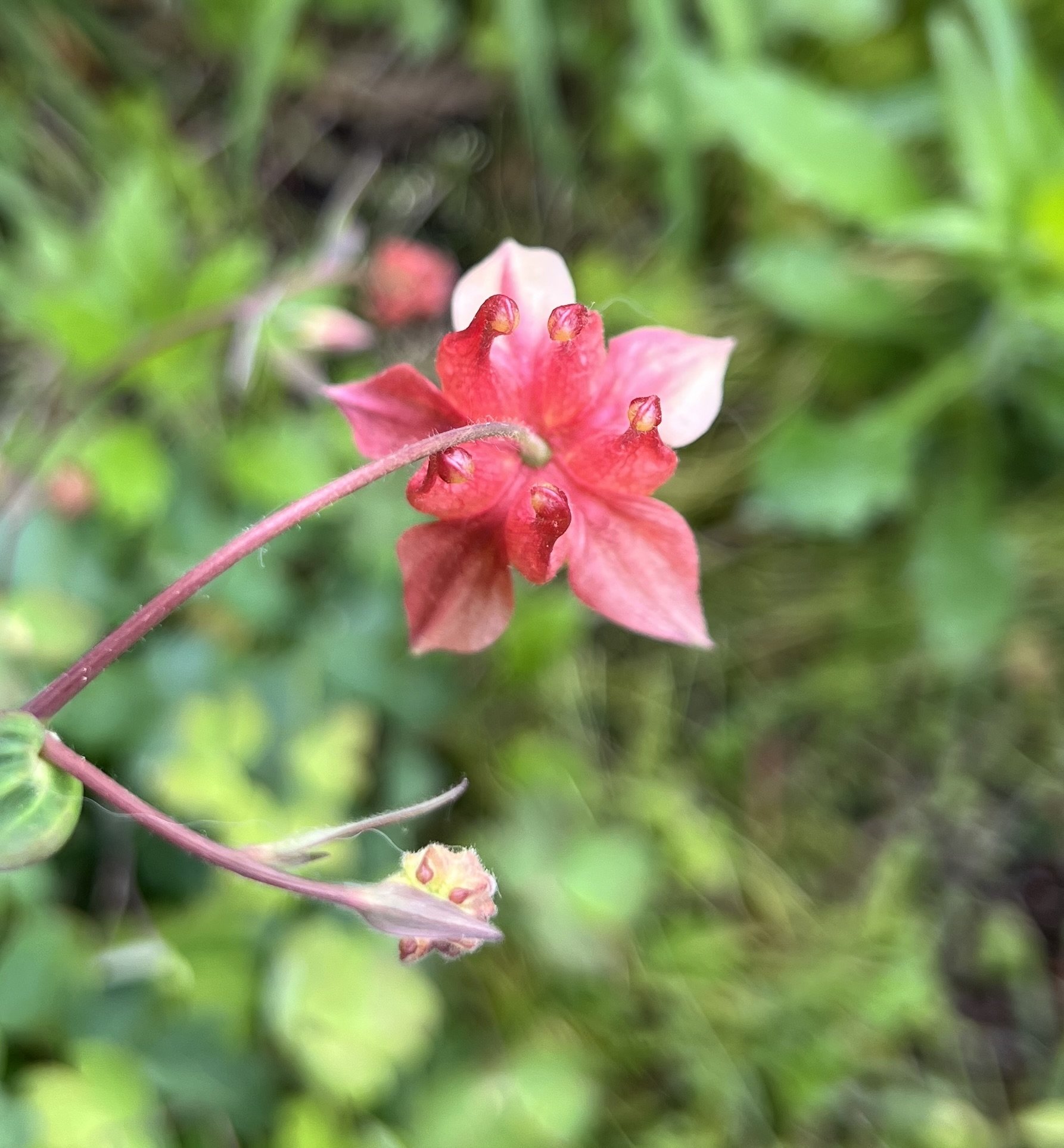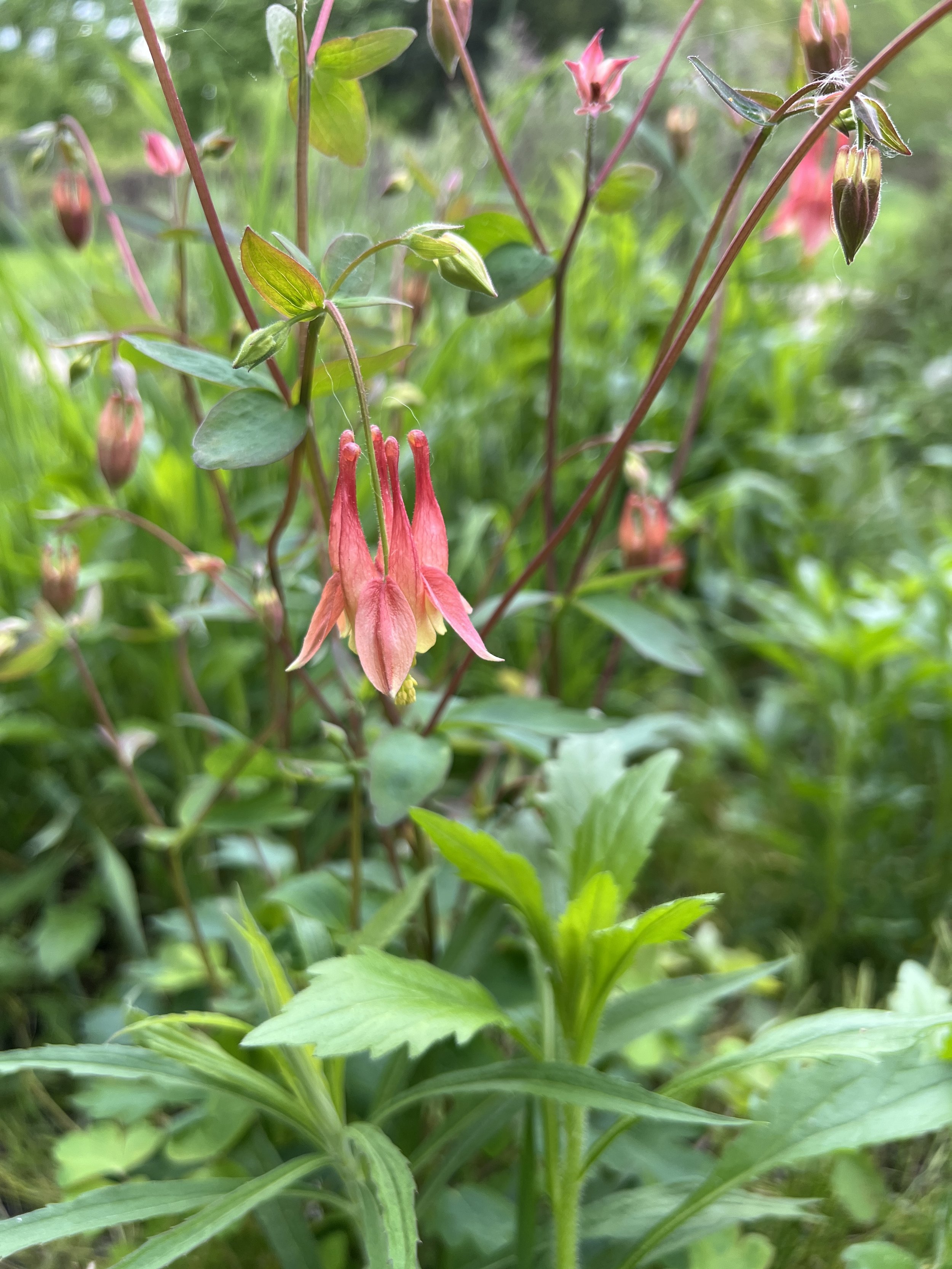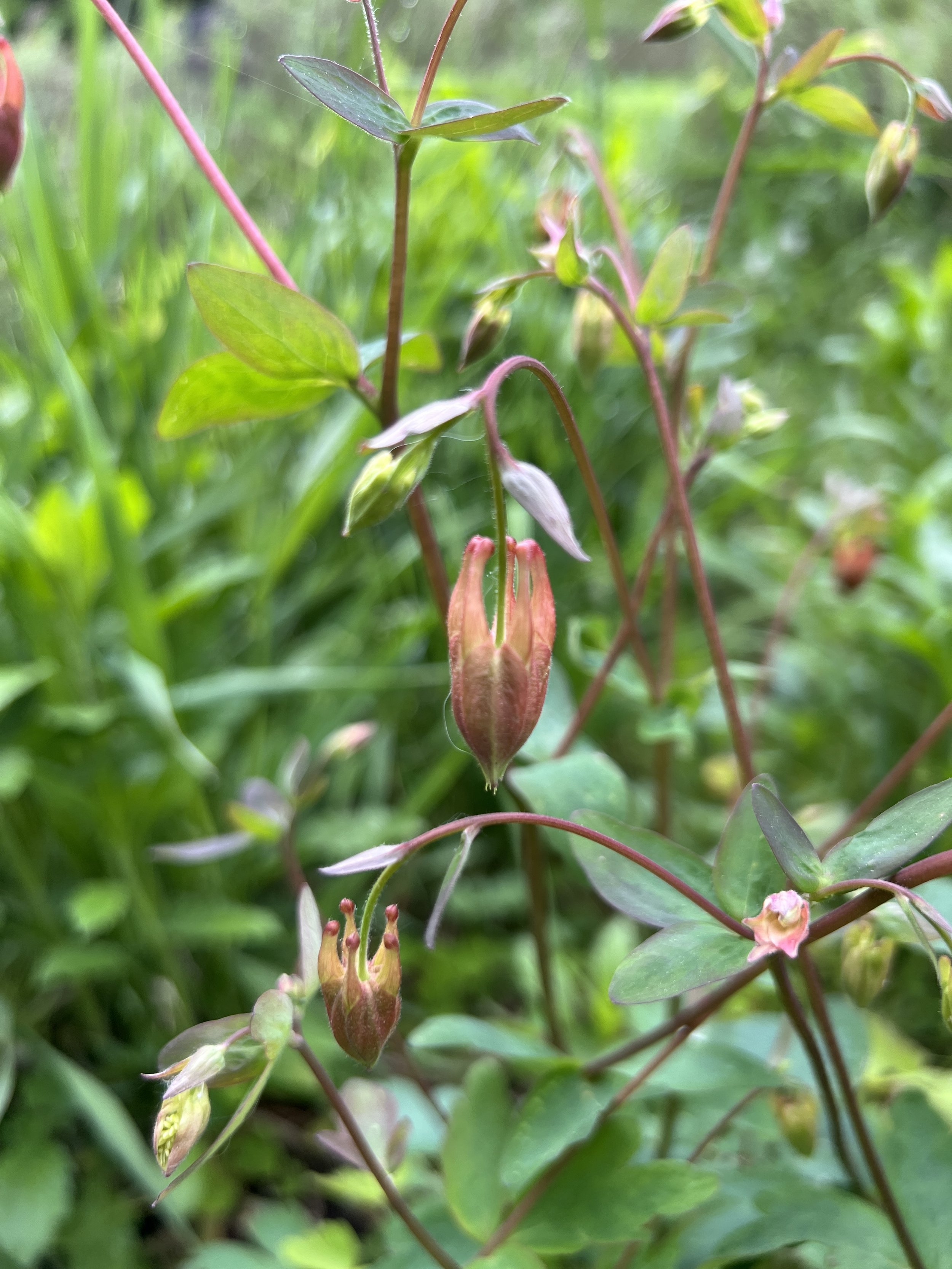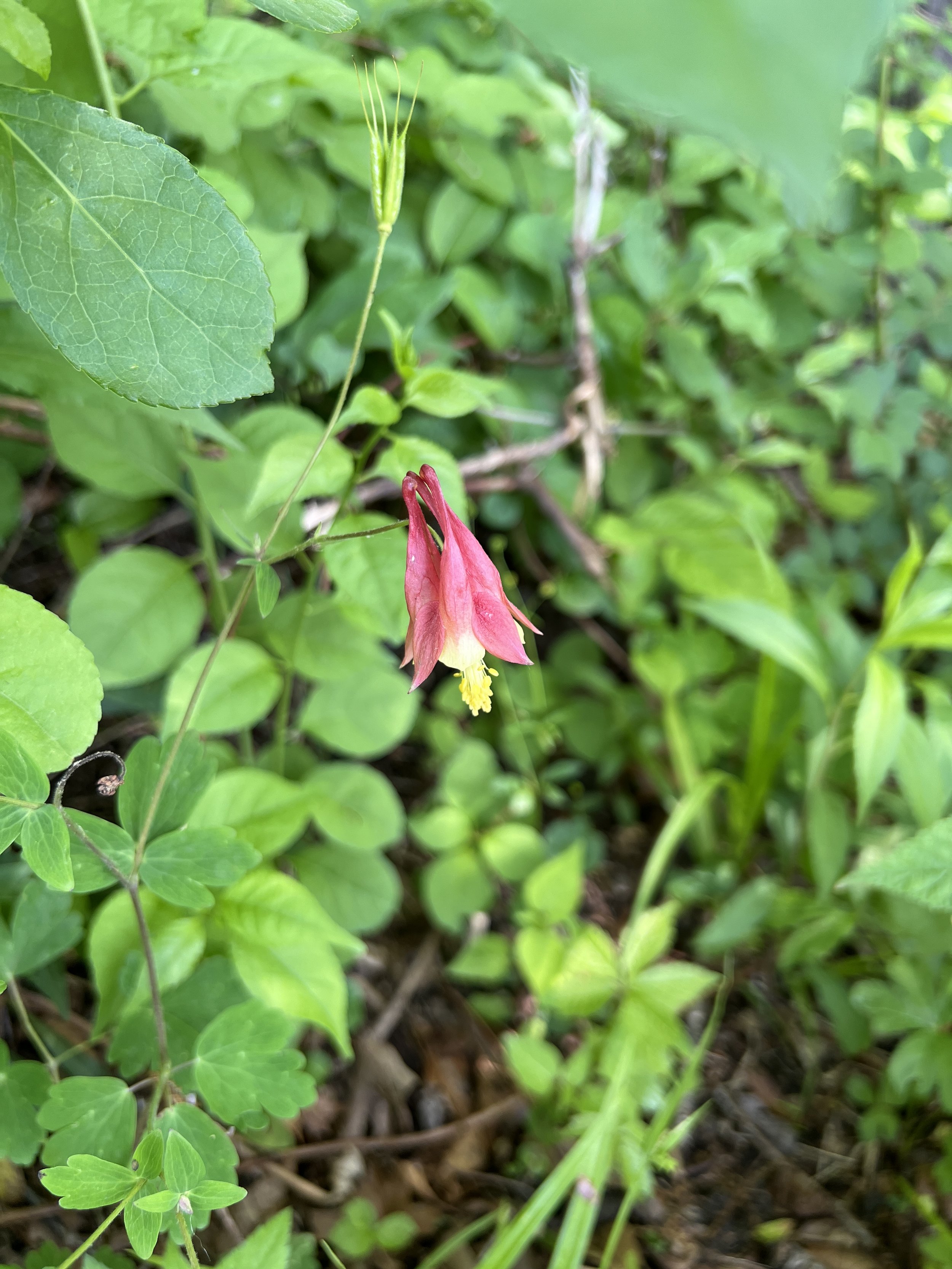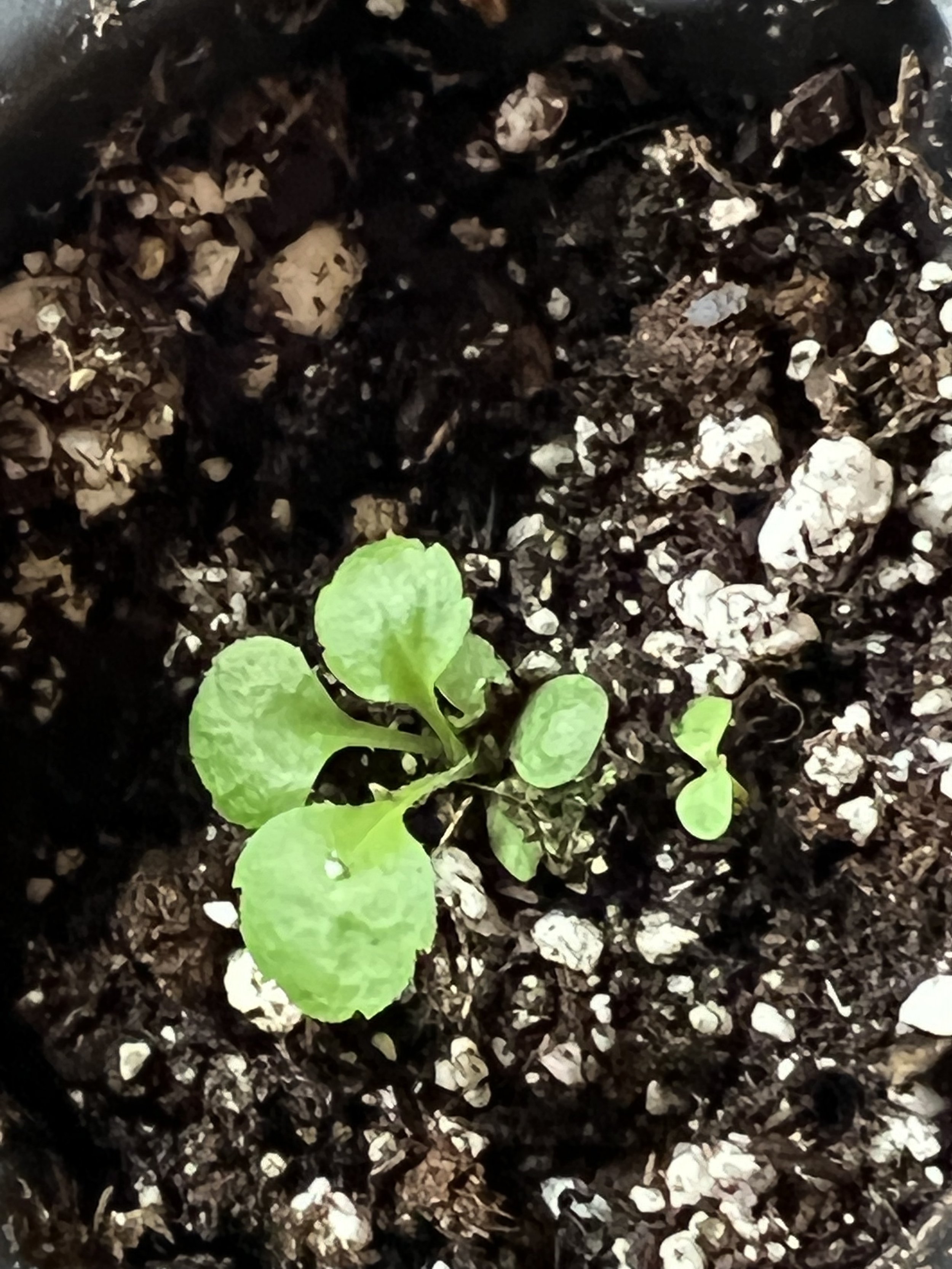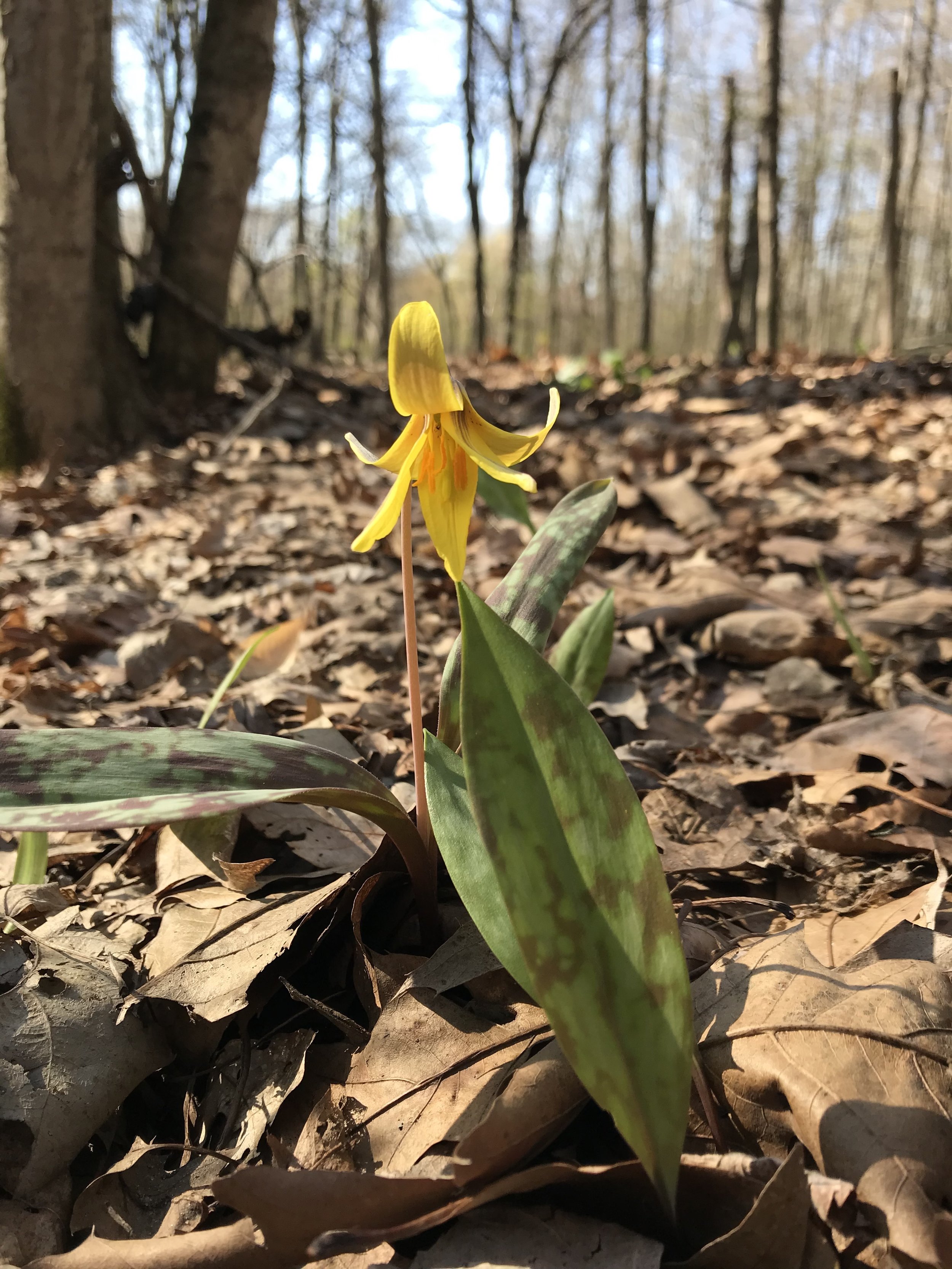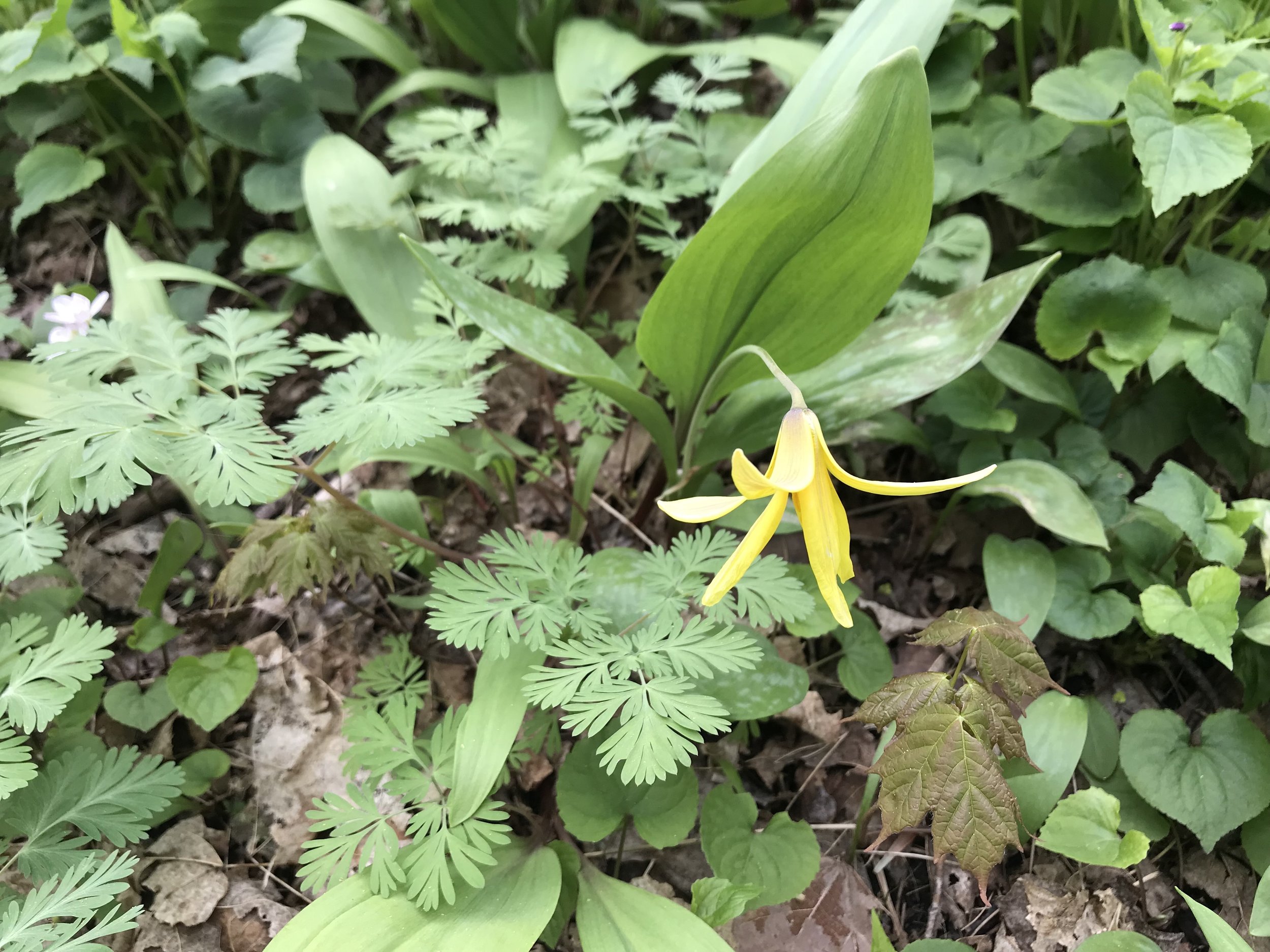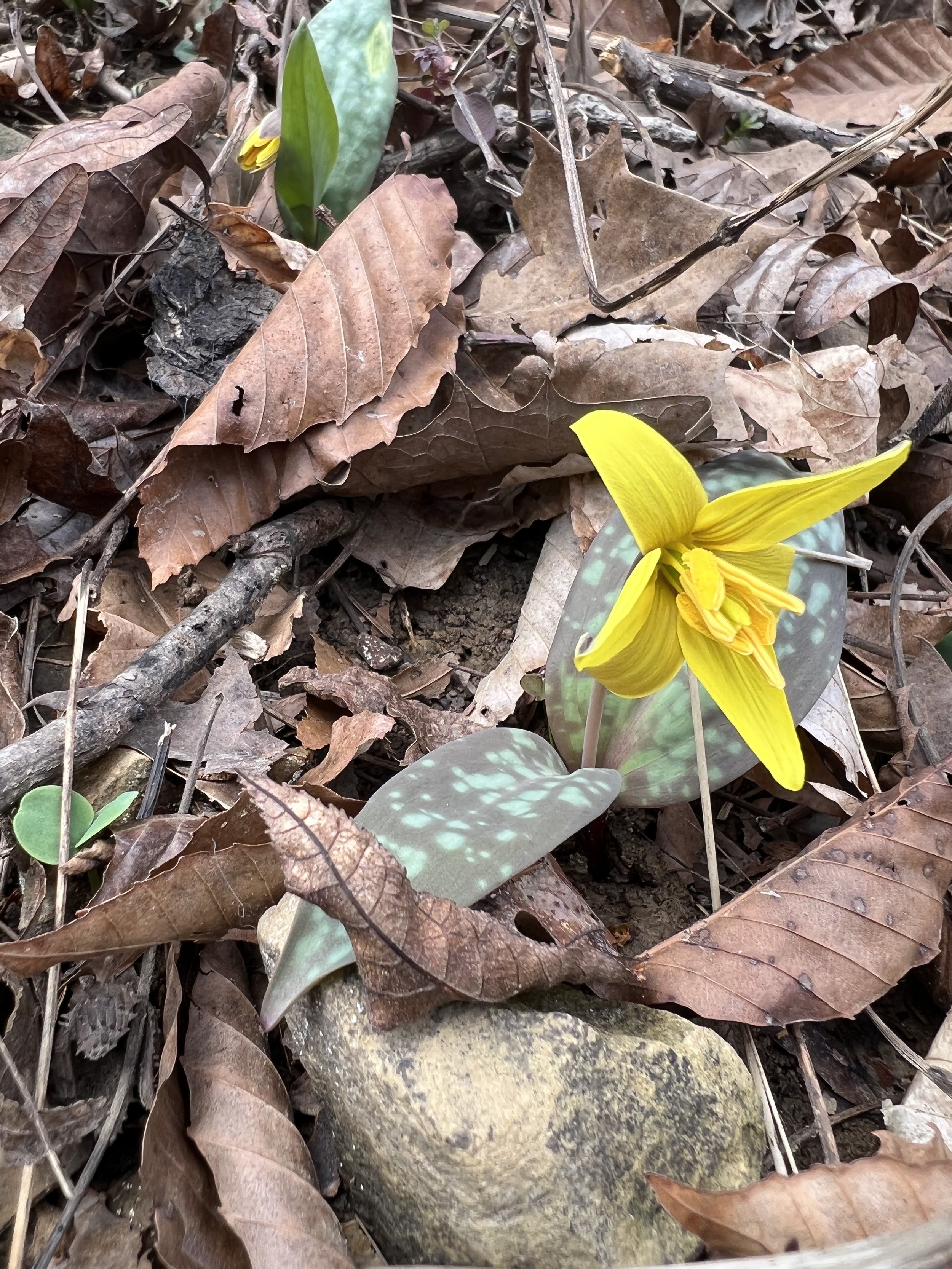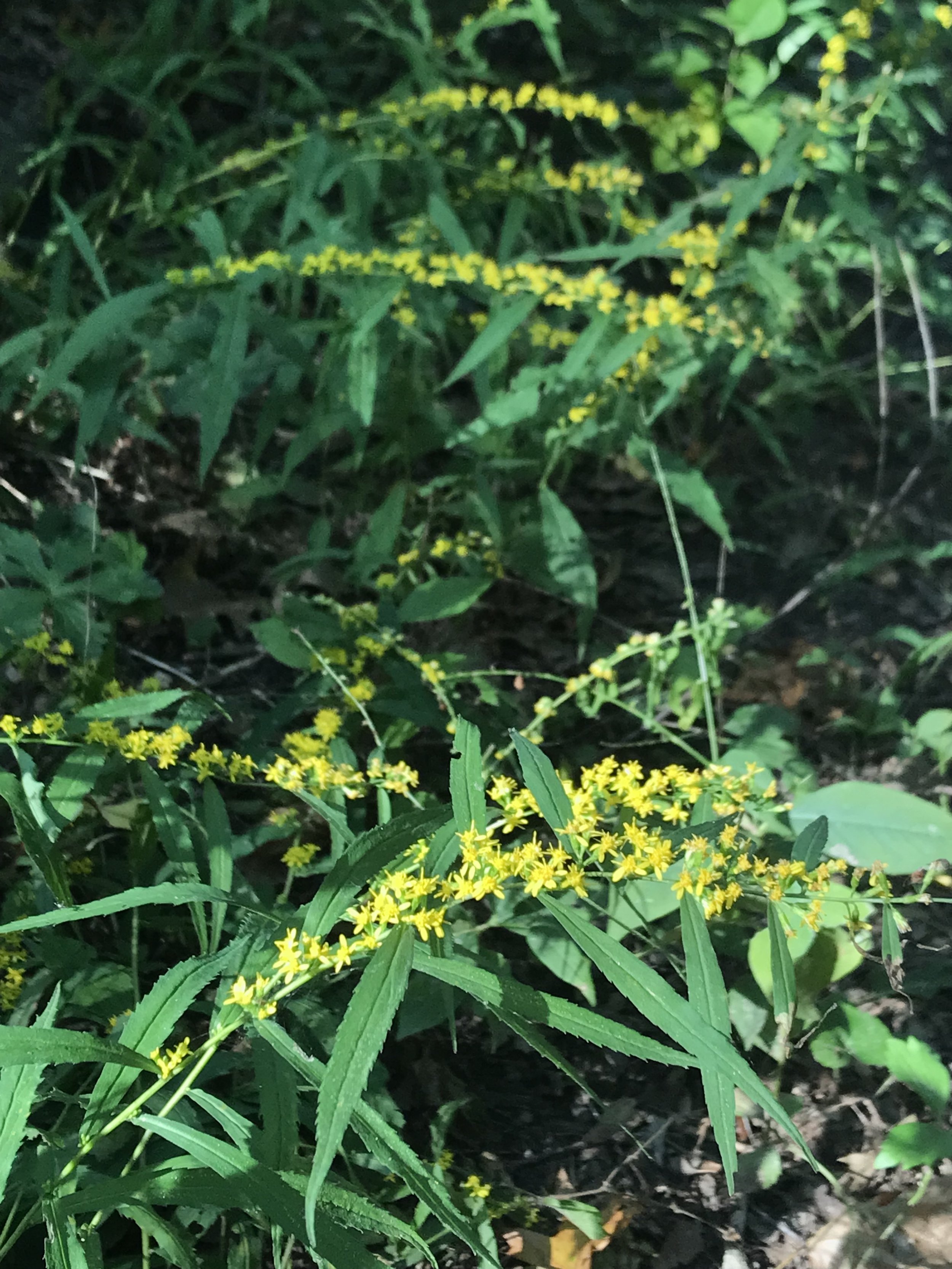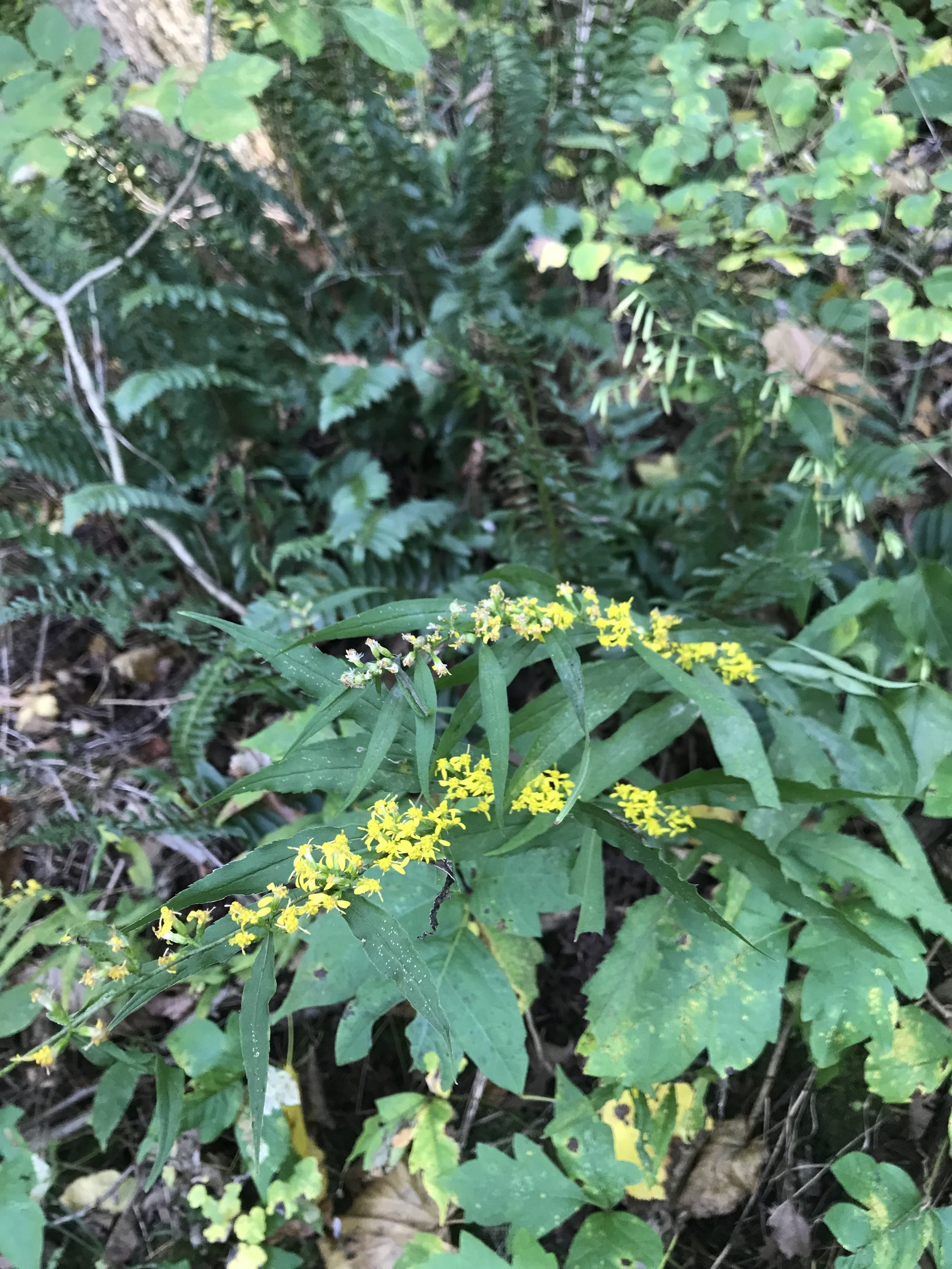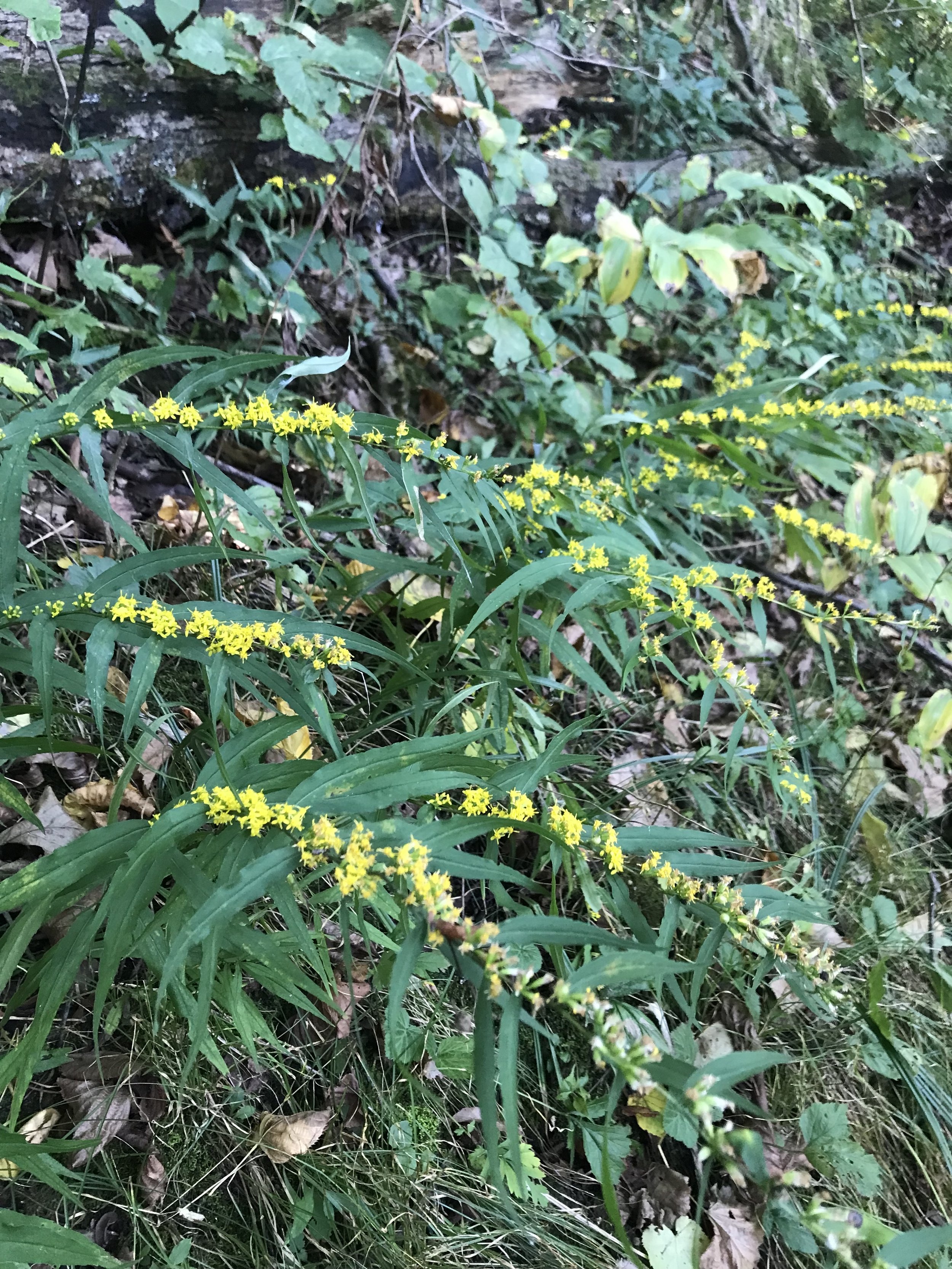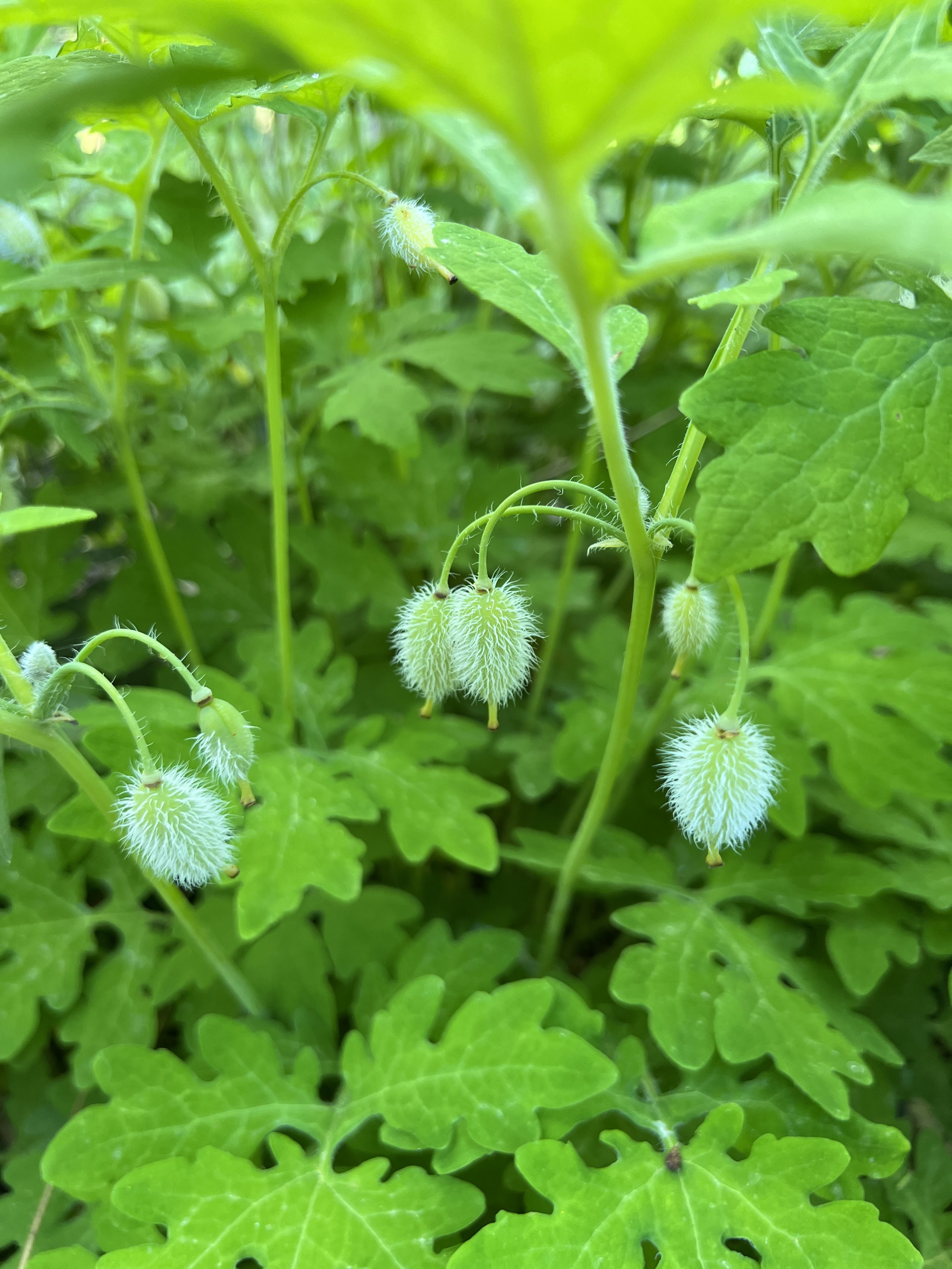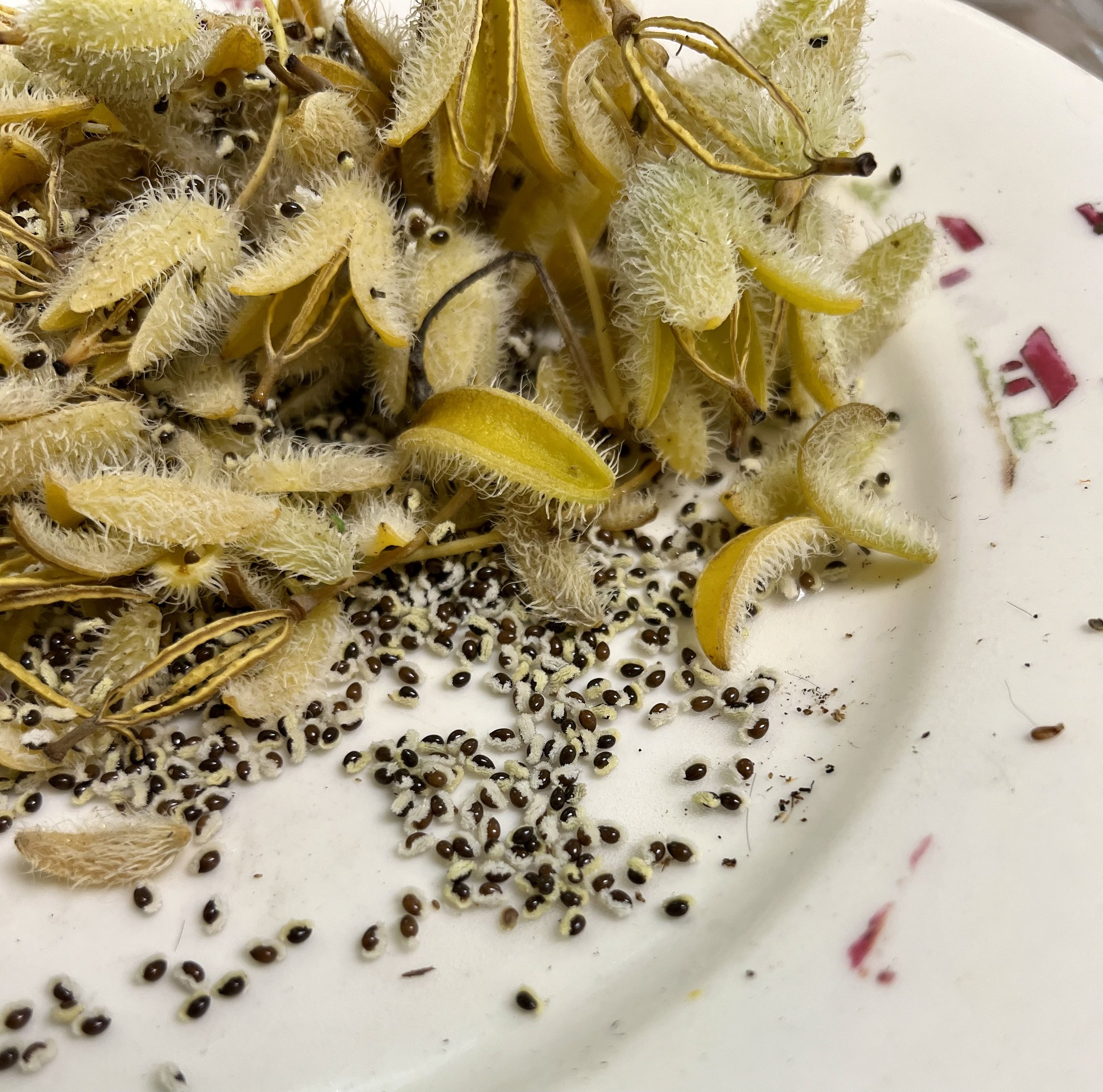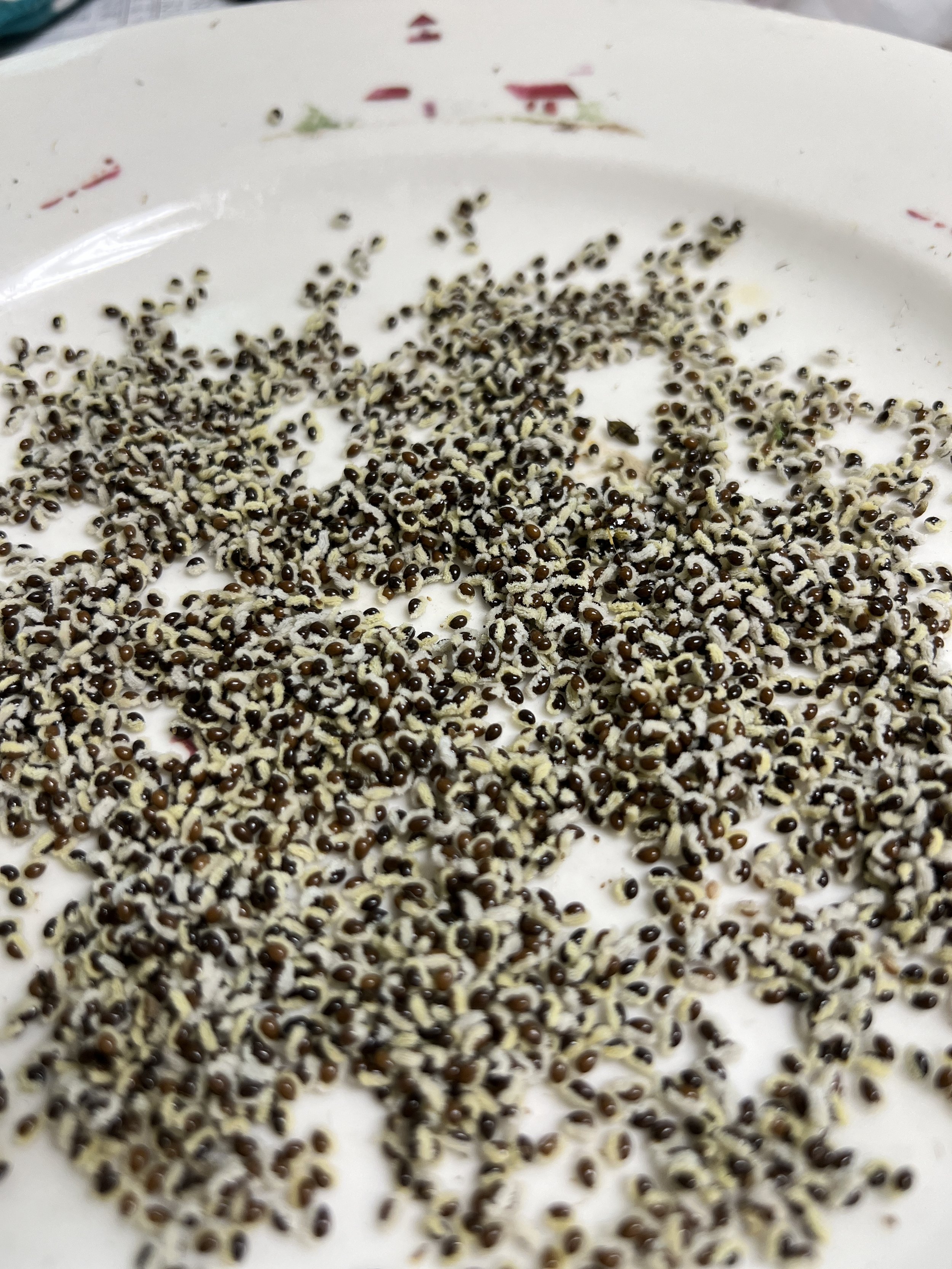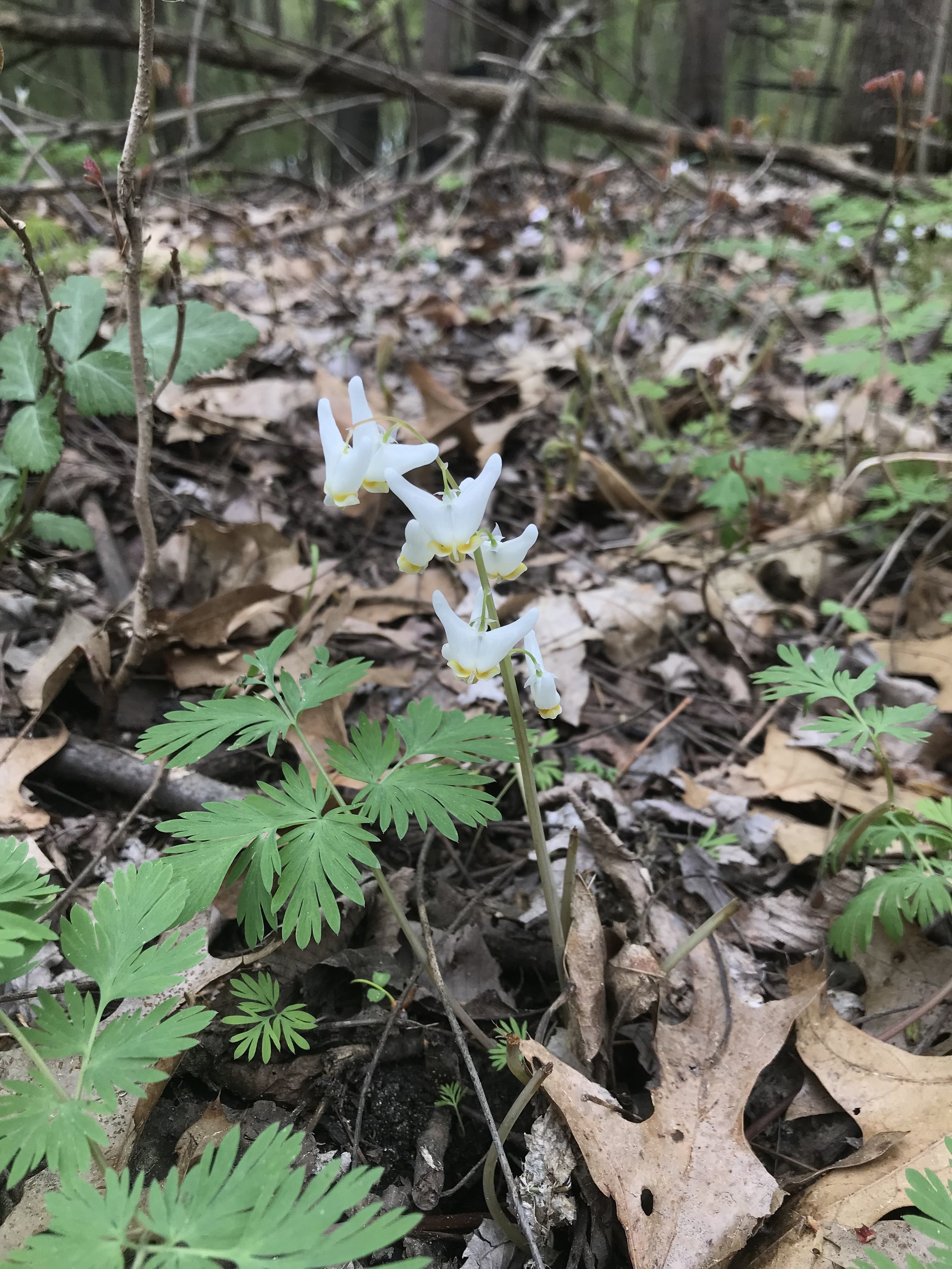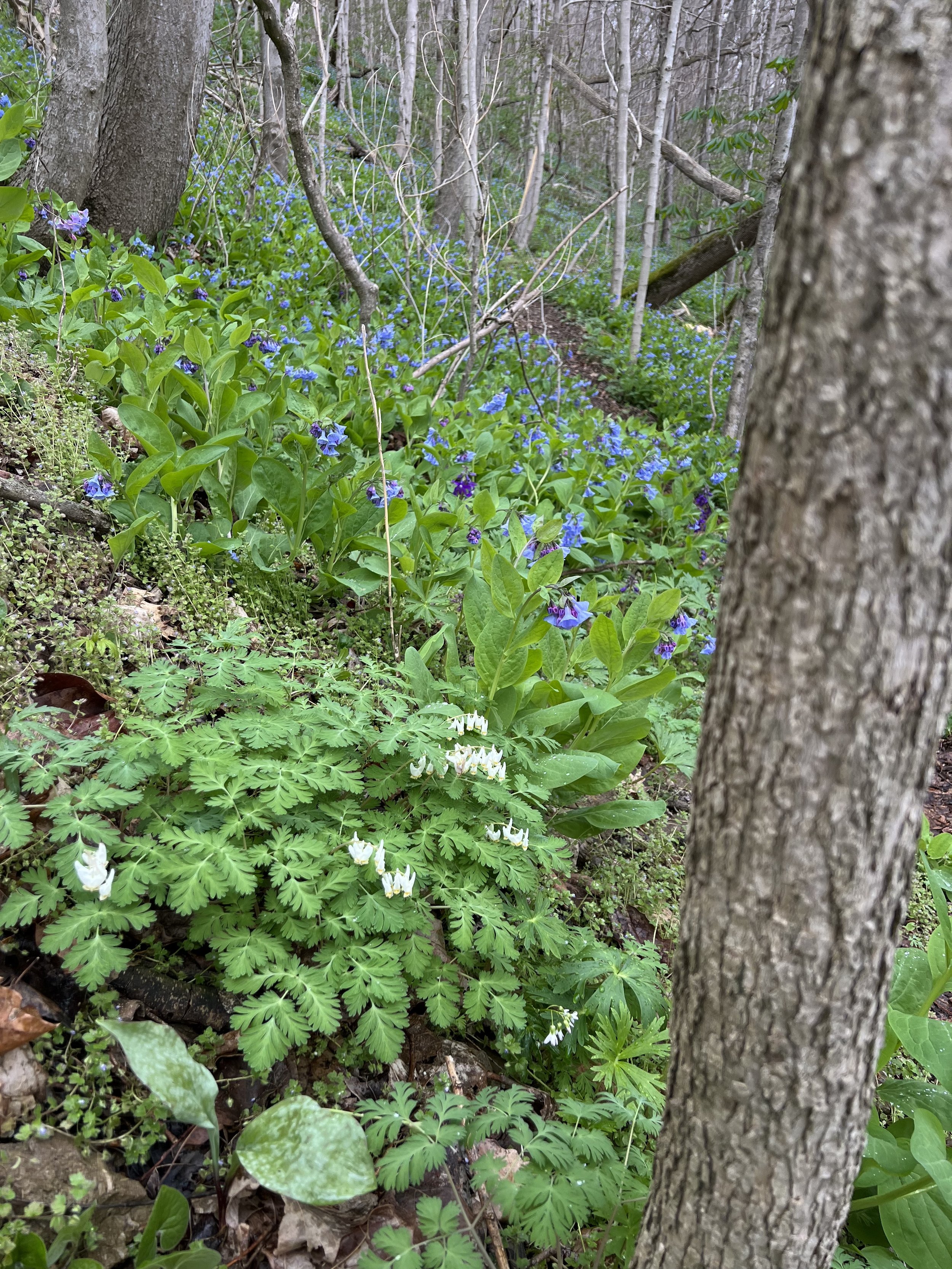Wild Columbine (Aquilegia canadensis)
Wild Columbine is a fairly common plant of woodlands and woodland edges, throughout Michigan. It can also take full sun (though probably not preferred) and in this case the foliage is often dark purple or it can even be almost black. This plant does quite well in a regular garden setting.
The red on the flowers as well as the long spurs communicate about the pollinator! Ruby throated hummingbirds are the most common pollinator of these plants. As the hummingbird reaches with its long beak up into the nectary in the red spurs, its head will brush the exserted yellow stamens with their yellow anthers. Moving from flower to flower, pollination will occur. Small bees will crawl up into the spurs to get nectar and bumblebees will collect pollen from the many stamens. There are several insects that use the foliage of this plant. See Info below for more information.
Flowers are yellow at the bases and form five columns that lead up into the red spurs and five sepals (also red) alternate with the spurs. Flowers may be bright yellow and red, or they may be paler with almost a peach color replacing the red, and cream instead of yellow. The leaves are lobed and rounded and are usually a greenish-gray. They resemble Early Meadow Rue leaves.
Once pollinated, seed capsules form. They are long and taper to a filament and once seeds are ripe the capsule will split open. Small, shiny, black seeds fall out and perhaps bounce on the soil. Wild Columbine spreads by reseeding itself. It may be a short-lived plant but it may also persist for years. Plants can mature to be quite large with 50+ blossoms per plant.
Wild Columbine (Aquilegia canadensis)
Michigan Flora reference page for state distribution: Wild Columbine
height: 1-3 feet
bloom time: April-June
soil: medium
sun, full, partial, shade
plant spacing: 15”
flower: yellow, red
life cycle: perennial (possibly short-lived)
family: Ranunculaceae
Wild Columbine is a fairly common plant of woodlands and woodland edges, throughout Michigan. It can also take full sun (though probably not preferred) and in this case the foliage is often dark purple or it can even be almost black. This plant does quite well in a regular garden setting.
The red on the flowers as well as the long spurs communicate about the pollinator! Ruby throated hummingbirds are the most common pollinator of these plants. As the hummingbird reaches with its long beak up into the nectary in the red spurs, its head will brush the exserted yellow stamens with their yellow anthers. Moving from flower to flower, pollination will occur. Small bees will crawl up into the spurs to get nectar and bumblebees will collect pollen from the many stamens. There are several insects that use the foliage of this plant. See Info below for more information.
Flowers are yellow at the bases and form five columns that lead up into the red spurs and five sepals (also red) alternate with the spurs. Flowers may be bright yellow and red, or they may be paler with almost a peach color replacing the red, and cream instead of yellow. The leaves are lobed and rounded and are usually a greenish-gray. They resemble Early Meadow Rue leaves.
Once pollinated, seed capsules form. They are long and taper to a filament and once seeds are ripe the capsule will split open. Small, shiny, black seeds fall out and perhaps bounce on the soil. Wild Columbine spreads by reseeding itself. It may be a short-lived plant but it may also persist for years. Plants can mature to be quite large with 50+ blossoms per plant.
Wild Columbine (Aquilegia canadensis)
Michigan Flora reference page for state distribution: Wild Columbine
height: 1-3 feet
bloom time: April-June
soil: medium
sun, full, partial, shade
plant spacing: 15”
flower: yellow, red
life cycle: perennial (possibly short-lived)
family: Ranunculaceae
Wild Columbine is a fairly common plant of woodlands and woodland edges, throughout Michigan. It can also take full sun (though probably not preferred) and in this case the foliage is often dark purple or it can even be almost black. This plant does quite well in a regular garden setting.
The red on the flowers as well as the long spurs communicate about the pollinator! Ruby throated hummingbirds are the most common pollinator of these plants. As the hummingbird reaches with its long beak up into the nectary in the red spurs, its head will brush the exserted yellow stamens with their yellow anthers. Moving from flower to flower, pollination will occur. Small bees will crawl up into the spurs to get nectar and bumblebees will collect pollen from the many stamens. There are several insects that use the foliage of this plant. See Info below for more information.
Flowers are yellow at the bases and form five columns that lead up into the red spurs and five sepals (also red) alternate with the spurs. Flowers may be bright yellow and red, or they may be paler with almost a peach color replacing the red, and cream instead of yellow. The leaves are lobed and rounded and are usually a greenish-gray. They resemble Early Meadow Rue leaves.
Once pollinated, seed capsules form. They are long and taper to a filament and once seeds are ripe the capsule will split open. Small, shiny, black seeds fall out and perhaps bounce on the soil. Wild Columbine spreads by reseeding itself. It may be a short-lived plant but it may also persist for years. Plants can mature to be quite large with 50+ blossoms per plant.
Wild Columbine (Aquilegia canadensis)
Michigan Flora reference page for state distribution: Wild Columbine
height: 1-3 feet
bloom time: April-June
soil: medium
sun, full, partial, shade
plant spacing: 15”
flower: yellow, red
life cycle: perennial (possibly short-lived)
family: Ranunculaceae
From Illinois Wildflowers: “The larvae of various insects feed on Wild Columbine, including those of Erynnis lucilius (Columbine Duskywing), Papaipema leucostigma (Borer moth species), Pristophora aquilgae (Columbine Sawfly), and serveral Phytomyza spp. (Leaf Miner Flies).”




